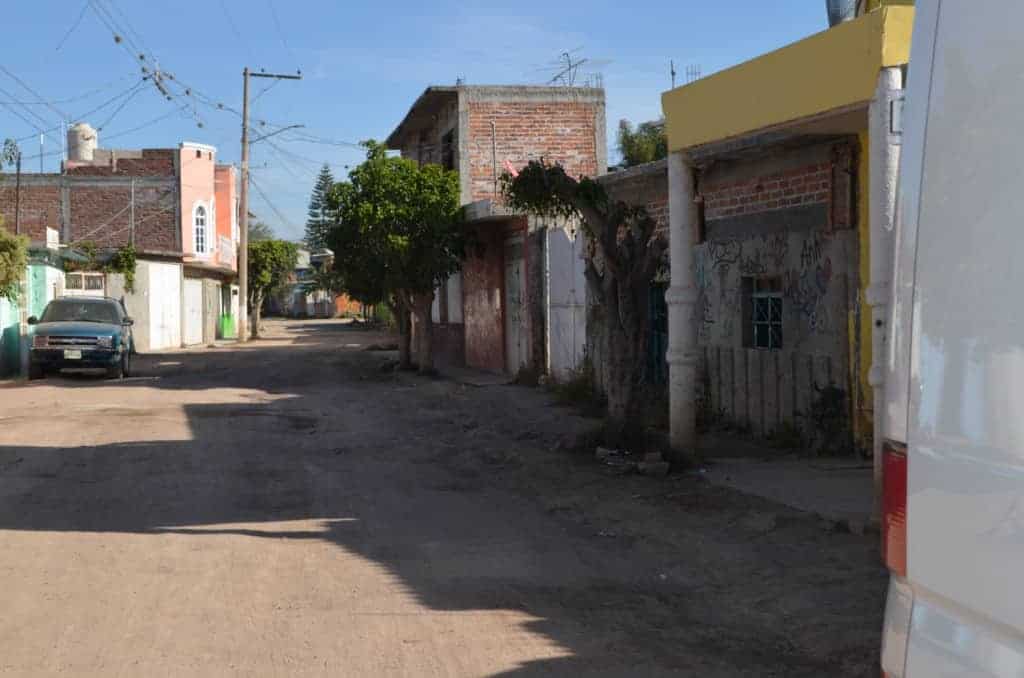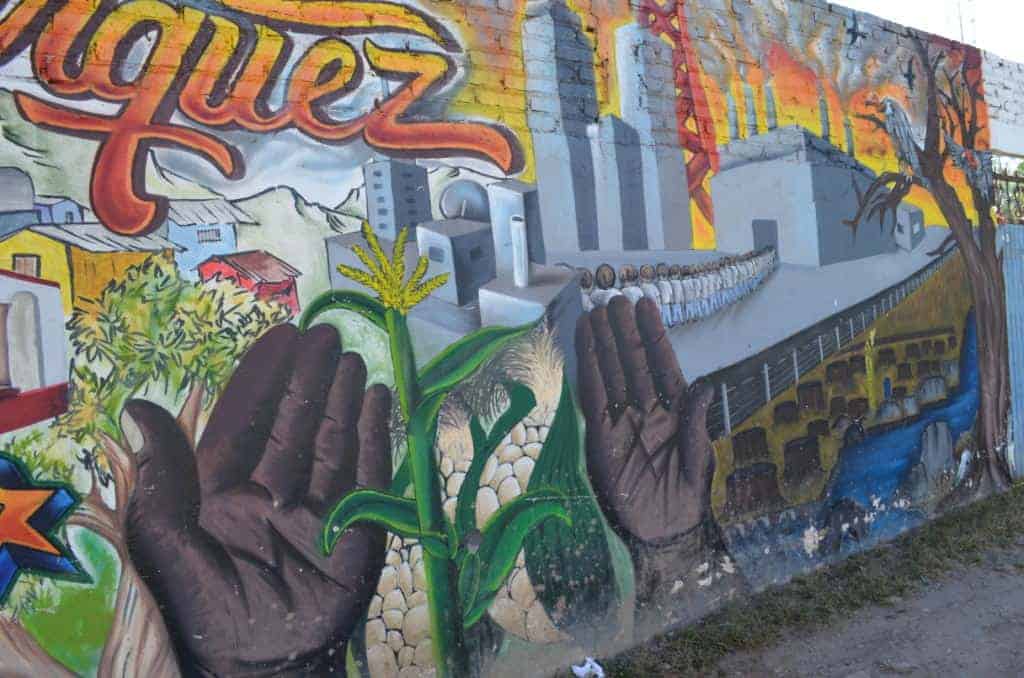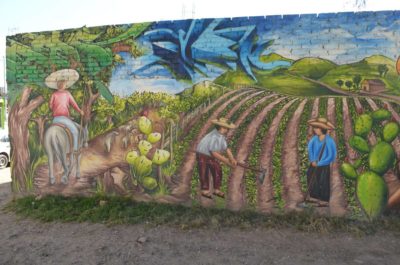I am a global citizen. I have lived in eight different countries, and I have traveled extensively, but on November 12, 2018, I embarked on a life-changing journey that far exceeded my expectations in terms of what I learned, what I saw, and the relationships that I built. All of this is thanks to one creative and hard-charging individual, Lorena Patterson, who organized the Hispanic/Latino Initiative at Go Global NC and led a group of us to central Mexico.
The most impactful part of my trip was visiting the rural communities in Guanajuato. I was particularly impressed by Ex-Hacienda de Márquez, the first rural town that we visited. Ex-Hacienda de Márquez is in the municipality of Irapuato (in the state of Guanajuato) and is home to approximately 2,300 villagers. Many Americans would consider the living conditions of this small town to be uninhabitable. Large families live in small cement or brick dwellings, and bathrooms as we know them do not exist. Some structures do not have electricity, running water, or floors.


The optics of Ex-Hacienda de Márquez are grim. As I walked the small, rocky, and uneven streets, I wondered how it is possible that some people in this world live surrounded by such poverty and others live surrounded by such excess (I am ashamed to admit, I now realize the excess that surrounds me). I questioned the fairness of it all. I felt compassion and pity for the inhabitants and grateful for their generosity of spirit, and for welcoming us into their lives.
My appreciation for Ex-Hacienda de Márquez grew even deeper when I learned about a group of young artists that took it upon themselves to beautify their town with what they themselves refer to as “urban art.” Sprinkled throughout on walls of the buildings were graffiti-like visual images, often dedicated to someone special to the artist.


These young artists are self-trained and lacked the educational opportunities to improve and grow their artistic abilities, until Adriana Cortes Jiménez intervened. Adriana is the founder and leader of a non-profit called Fundación Comunitaria del Bajío (Community Foundation of the Bajio). Her mission in life is to help improve the lives of the underrepresented and underserved Mexicans living in the poorest rural areas. She saw an opportunity to help these young artists and facilitated bringing David Gómez, a graphic designer and visual artist from Irapuato, to Ex-Hacienda de Márquez to conduct a workshop and teach the young group of artists the art of mural painting.
Since prehistoric times, murals (from Latin “murus,” or wall) have been powerful tools of self and community expression. They tell a story of a group of people and often express individual and collective issues concerning social injustice, oppression, and human rights. As part of this workshop, the young artists studied the history of Ex-Hacienda de Márquez and learned the art of mural painting while integrating their love for graffiti. The workshop culminated in a daunting and powerful mural that depicts, from left to right, the history of their community.
The left part of the mural represents the lands surrounding the Ex-Hacienda de Márquez from over 400 years ago when the Márquez family owned and operated the Hacienda and the people who lived in the land worked to support the family and community. Moving left to right, the middle of the mural displays the Hacienda.
Hacienda owners held a privileged status and lived in large beautiful homes like the one depicted above. The land and building was usually donated to them in colonial times by the Spanish empire. After the Mexican Revolution of 1910, the government took the land from the Hacienda owners and distributed it to the workers (this is called ejido or common land). Unfortunately, although the workers now owned the land, they lacked other resources that they needed to succeed.
I found the third part of the mural to be the most daunting one. It represents the current reality of a Guanajuato that has been overtaken by industrial parks that house international factories. On the one hand, these industries bring jobs to the local villagers; on the other hand, the pay and the repetitive nature of the work are far from desirable.


The image depicts a row of workers with their heads down, representing submission, waiting to clock into the factory for their jobs. Destruction surrounds the grey and grim structure of the factory as represented by the flames behind the building and the amputated tree trunks in the lower right corner. Industries are making money at the expense of the hard working hands of the natives (image in the forefront). Notice the vultures in the top right witnessing death and decay.
The stark contrast between what I consider uninhabitable living conditions of the rural villages and the state-of-the-art international factories that hire many of the local Mexican people left me questioning the inherent socio-economic structures of capitalism. However, the work of people like Adriana and her foundation, of Lorena and Go Global, and the new relationships that I have built with my new friends from Mexico and from North Carolina have filled me with hope.
I now have a new appreciation of life and I am determined to facilitate change — one-step at a time.
A video about the mural and the artists of Ex-Hacienda de Marquez can be found below.







